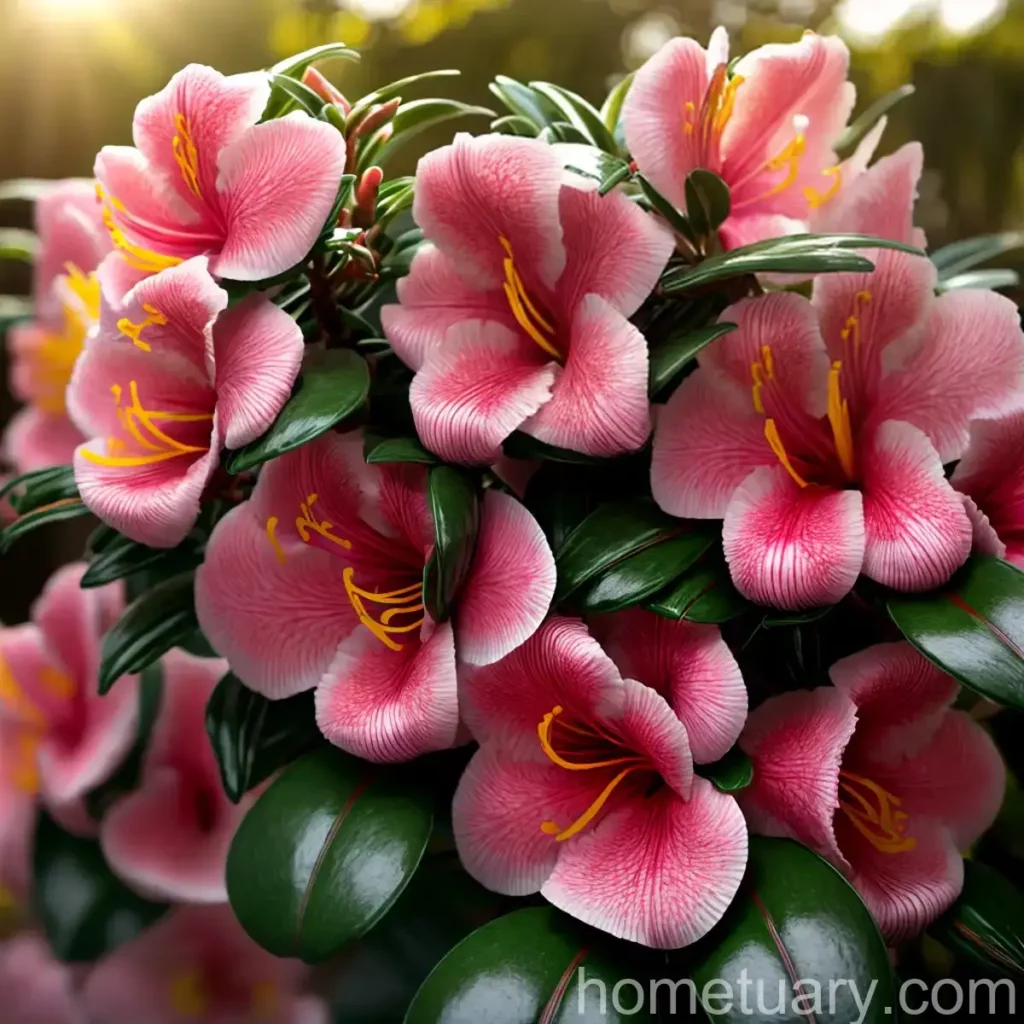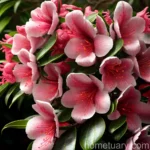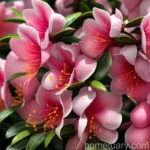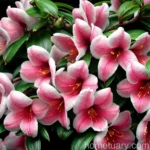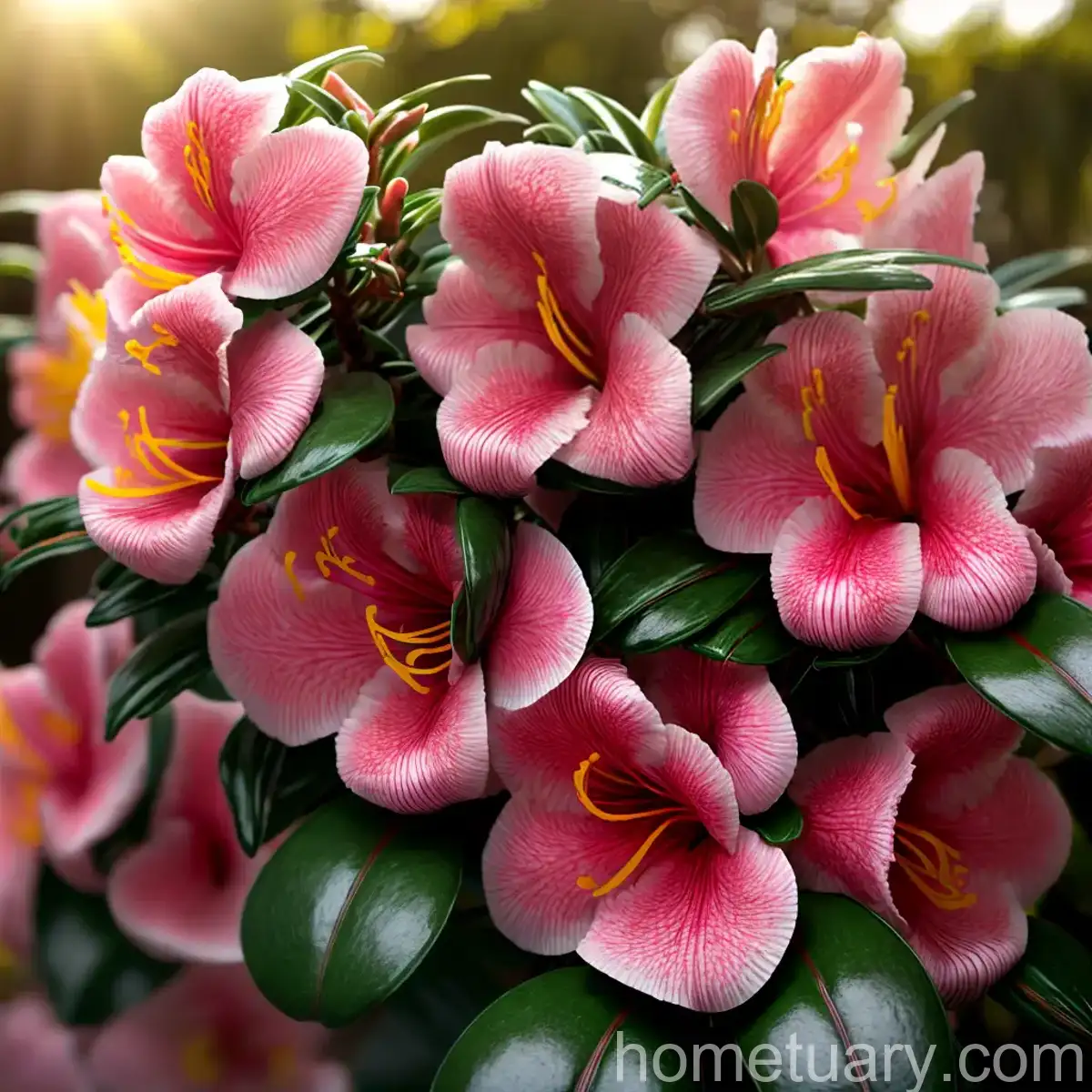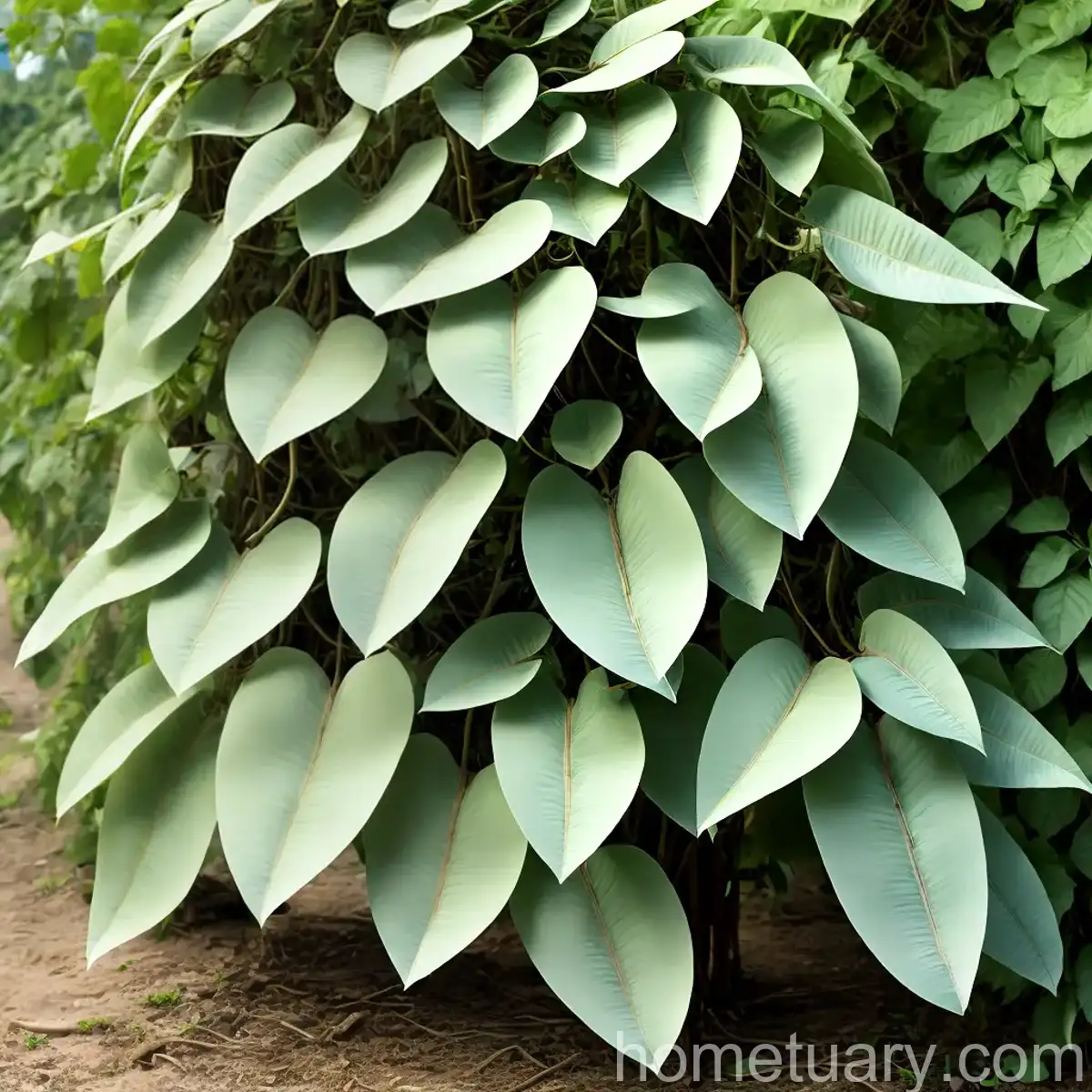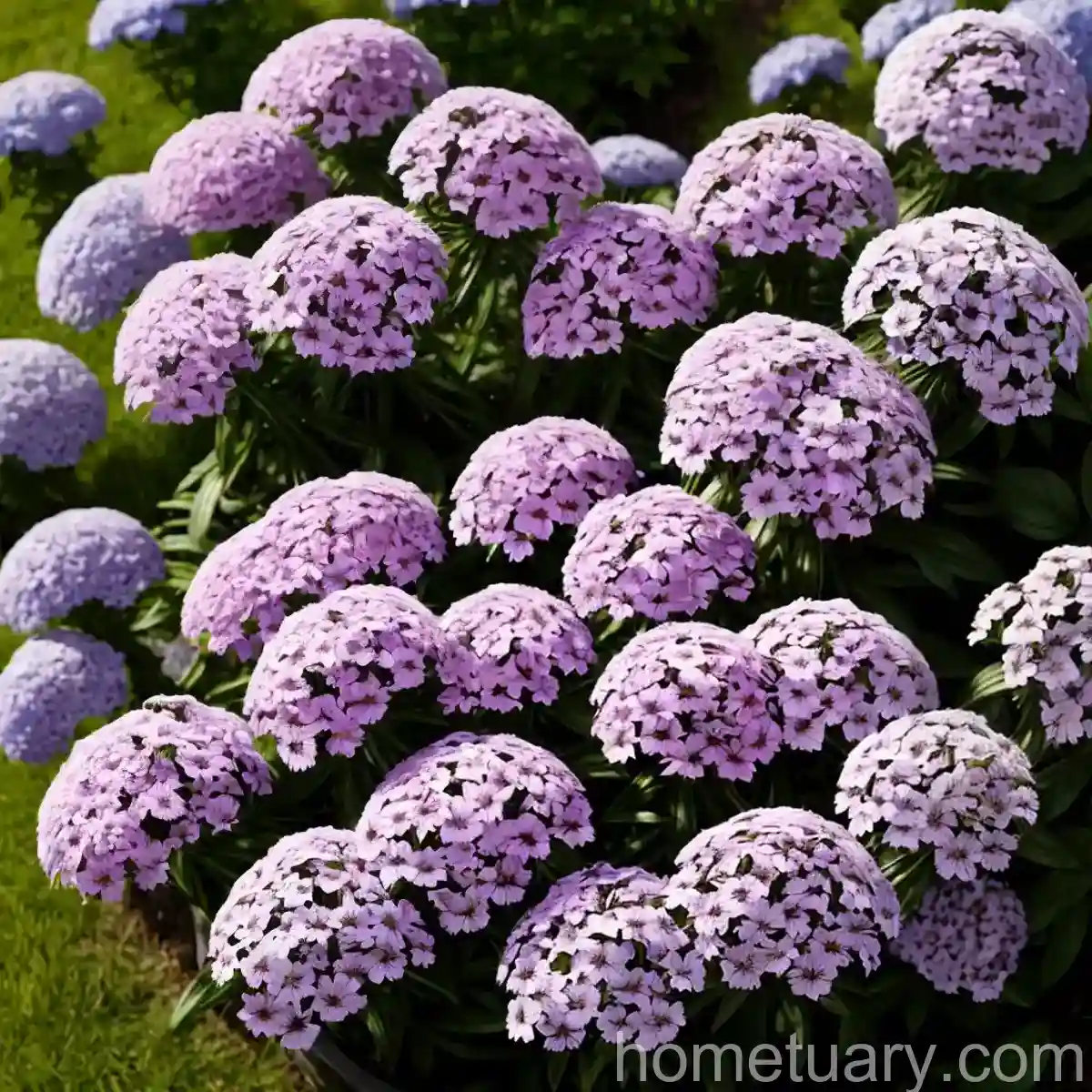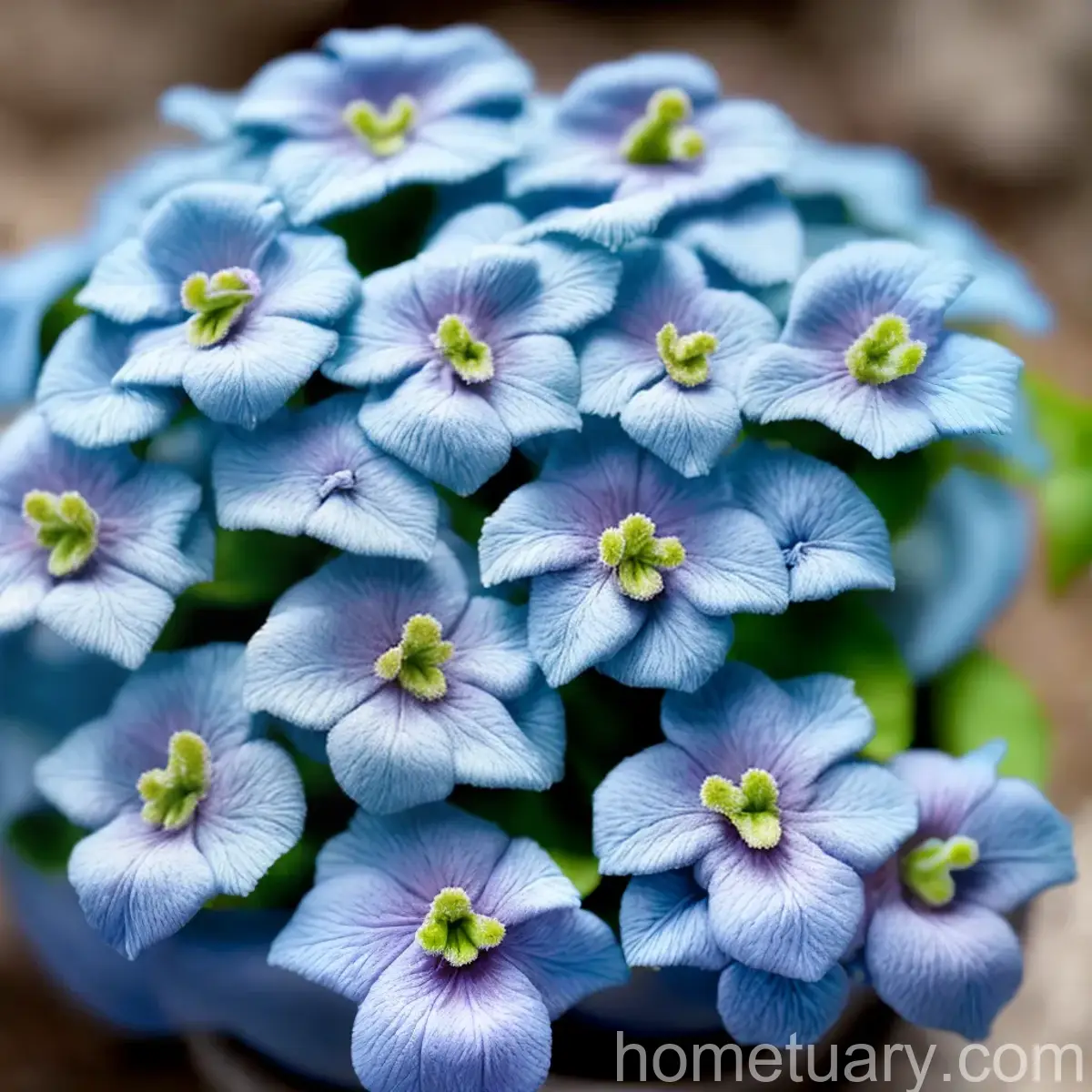The Evergreen Azalea (Rhododendron ‘Treasure’)
In the world of horticulture, few plants are as captivating and elegant as the evergreen azalea, scientifically known as Rhododendron ‘Treasure’. Renowned for their vibrant blooms and lush, glossy foliage, these plants are not only a sight to behold but also a pleasure to cultivate.
In this comprehensive guide, we will delve into the intricate details of the evergreen azalea, from its cultural and horticultural significance to its care requirements and propagation techniques. By the end of this journey, you’ll gain a newfound appreciation for the exquisite beauty of the evergreen azalea and the art of nurturing these botanical treasures.
What is the Evergreen Azalea (Rhododendron ‘Treasure’)?
The evergreen azalea, a member of the Rhododendron genus, is a highly sought-after plant celebrated for its captivating blooms, glossy foliage, and overall ornamental appeal. Rhododendron ‘Treasure’ is a specific variety of evergreen azalea, known for its stunning flowers and evergreen nature. These plants are cherished for their ability to grace gardens, landscapes, and containers with a burst of color and texture, making them a beloved choice among gardening enthusiasts.
Key Takeaways – Evergreen Azalea (Rhododendron ‘Treasure’)
Before we unravel the intricacies of growing and caring for the evergreen azalea, let’s start with some key takeaways about this enchanting plant:
- Botanical Name: Rhododendron ‘Treasure’
- Common Name: Evergreen Azalea
- Cultural Significance: Celebrated for its vibrant blooms and glossy foliage
- Uses: Ornamental plant for gardens, landscapes, and containers
- Distinctive Feature: Evergreen nature and captivating flowers
- Cultivation: Favored for its ornamental value and ease of cultivation
- Variety: Rhododendron ‘Treasure’ is a specific variety of evergreen azalea known for its exceptional characteristics
With these key takeaways in mind, let’s explore the various facets of growing and caring for the evergreen azalea, from its cultural preferences to its propagation techniques.
Culture
Cultivating the evergreen azalea involves understanding its specific cultural requirements, which encompass factors such as water, sunlight, soil, and fertilizer. To ensure the optimal growth and development of these botanical treasures, it’s essential to pay careful attention to the following cultural considerations.
Water
Proper watering is crucial for the health and vitality of evergreen azaleas. These plants prefer consistently moist but well-drained soil, especially during the growing season. However, it’s important to avoid overwatering, as waterlogged soil can lead to root rot and other detrimental conditions. During periods of drought or dry weather, it’s essential to provide supplemental watering to maintain adequate soil moisture.
Watering Tips:
– Consistent Moisture: Ensure that the soil remains consistently moist but not waterlogged.
– Avoid Overwatering: Prevent waterlogging by allowing excess water to drain freely from the soil.
– Supplemental Watering: Provide additional water during dry spells to maintain adequate soil moisture.
Sunlight
The evergreen azalea thrives in partial shade to full sun, depending on the particular variety and local climatic conditions. While these plants appreciate filtered sunlight to protect them from intense heat and direct sunlight, they also benefit from receiving ample light to support healthy growth and prolific flowering.
Sunlight Requirements:
– Partial Shade to Full Sun: Provide a balance of sunlight, ensuring protection from intense heat.
– Filtered Sunlight: Shield the plants from direct, harsh sunlight to prevent leaf scorch.
– Ample Light: Ensure the plants receive sufficient light to promote robust growth and blooming.
Fertilizer
Appropriate fertilization plays a pivotal role in nourishing evergreen azaleas and promoting vibrant blooms and lush foliage. It’s essential to provide a balanced fertilizer formulated for acid-loving plants, as these plants thrive in acidic soil conditions. Furthermore, a well-planned fertilization schedule, incorporating both organic and synthetic fertilizers, can support the overall health and vigor of the plants.
Fertilization Guidelines:
– Acid-Loving Fertilizer: Use a balanced fertilizer specifically formulated for acid-loving plants.
– Fertilization Schedule: Implement a regular fertilization schedule during the growing season.
– Organic and Synthetic Fertilizers: Combine organic and synthetic fertilizers for comprehensive nourishment.
Soil
The soil composition profoundly influences the growth and performance of evergreen azaleas. These plants thrive in well-drained, acidic soil with a pH range of approximately 5.0 to 6.0. Additionally, incorporating organic matter, such as peat moss or compost, into the soil can enhance its texture, fertility, and acidity, providing an optimal growing medium for the plants.
Soil Recommendations:
– Well-Drained, Acidic Soil: Ensure that the soil provides excellent drainage and has an acidic pH.
– pH Range: Aim for a pH range of approximately 5.0 to 6.0 to create acidic soil conditions.
– Organic Matter: Incorporate organic amendments, such as peat moss or compost, to improve soil fertility and texture.
Pruning
Pruning is an essential aspect of evergreen azalea care, serving to maintain the plants’ shape, control their size, and promote vigorous growth and blooming. Proper pruning techniques not only enhance the plants’ aesthetic appeal but also contribute to their overall health and longevity.
Pruning Guidelines:
– Timing: Prune mature evergreen azaleas shortly after flowering to encourage new growth for the next season.
– Prune Lightly: Avoid excessive pruning, as it can limit the plants’ blooming potential.
– Remove Dead or Diseased Branches: Eliminate any dead or diseased branches to safeguard the plants’ health.
Propagation
The propagation of evergreen azaleas allows enthusiasts to expand their collection and share the beauty of these plants with others. Several methods, including stem cuttings and layering, can be employed to propagate these botanical treasures, enabling individuals to cultivate new plants from existing ones.
Propagation Techniques:
– Stem Cuttings: Harvest stem cuttings from healthy plants and propagate them in a suitable growing medium.
– Layering: Encourage the formation of roots on a plant’s stem while it is still attached to the parent plant, facilitating the development of new individuals.
Container Popularity
The evergreen azalea’s ornamental value, compact growth habit, and vibrant blooms make it a popular choice for container gardening. Whether displayed on patios, balconies, or within indoor spaces, these plants bring a touch of natural beauty and color to any setting, making them an appealing option for container cultivation.
Container Gardening Advantages:
– Ornamental Appeal: Enhance the aesthetic of outdoor and indoor spaces with the vibrant blooms and glossy foliage of evergreen azaleas.
– Space Optimization: Utilize containers to add greenery and color to small or confined areas, such as patios and balconies.
– Versatility: Display evergreen azaleas in containers to showcase their ornamental value and mobility within different spaces.
Common Diseases
Like all plants, evergreen azaleas are susceptible to certain diseases that can affect their health and appearance if left unmanaged. Understanding the symptoms and preventative measures for common diseases can help protect these plants from potential threats and ensure their continued vitality.
Common Diseases:
– Powdery Mildew: A fungal disease characterized by a powdery white growth on the leaves and stems.
– Leaf Spot: Identified by dark, irregular spots on the foliage, often leading to leaf discoloration and defoliation.
– Root Rot: Caused by excessive moisture, leading to the decay of the plant’s roots and subsequent decline in health.
Disease Diagnosis
Diagnosing and addressing diseases affecting evergreen azaleas involves careful observation and proactive measures to combat potential threats. By recognizing the symptoms and employing targeted treatments, individuals can effectively manage and mitigate the impact of various diseases on these plants.
Diagnostic Approach:
– Symptom Identification: Observe changes in the plants’ foliage, including discoloration, spots, or unusual growth.
– Disease Identification: Identify the specific disease based on the symptoms observed.
– Treatment Application: Implement appropriate treatments, such as fungicides or cultural controls, to manage the disease effectively.
Common Pests
In addition to diseases, evergreen azaleas are also vulnerable to certain pests that can compromise their wellbeing and vigor. By familiarizing oneself with common pests and their associated symptoms, individuals can take proactive measures to protect these plants from potential infestations.
Common Pests:
– Azalea Lace Bug: Small insects that feed on the underside of azalea leaves, causing stippling and discoloration.
– Spider Mites: Tiny arachnids that can cause stippling and webbing on the foliage, leading to reduced plant vigor.
– Scale Insects: Small, immobile insects that attach themselves to the stems and foliage, feeding on the plant’s sap and potentially causing decline.
Botanist’s Tips
To ensure the successful cultivation and care of evergreen azaleas, it’s beneficial to heed the following tips from seasoned botanists and horticultural experts. These insights can offer valuable guidance and practical recommendations for nurturing these botanical treasures.
Expert Tips:
– Soil Preparation: Prioritize soil preparation by creating an acidic, well-drained growing medium to support the plants’ needs.
– Consistent Maintenance: Implement regular maintenance practices, such as pruning, fertilization, and pest control, to uphold the plants’ health and vitality.
– Appropriate Watering: Practice judicious watering to maintain consistent soil moisture without causing waterlogging.
Fun Facts
Before we conclude this in-depth exploration of the evergreen azalea, let’s uncover some intriguing and little-known facts about these captivating plants. From their historical significance to their captivating attributes, these fun facts shed light on the unique charm and allure of the evergreen azalea.
Fascinating Tidbits:
– Cultural Symbolism: Evergreen azaleas are often associated with sentiments of gentleness, abundance, and gratitude, making them popular choices for gifts and symbolic gestures.
– Historical Heritage: These plants have been cherished for centuries, with a rich legacy entwined with horticultural traditions and botanical exploration.
As we’ve embarked on this illuminating journey through the world of evergreen azaleas, we’ve gained a deeper appreciation for the beauty, resilience, and ornamental value of these botanical treasures. From their cultural significance to their intricate care requirements, evergreen azaleas continue to enchant and inspire gardening enthusiasts worldwide.
Links to External Resources
For further exploration of evergreen azaleas, their cultivation, and their care, I recommend delving into the following resources:
1. American Rhododendron Society: https://www.rhododendron.org
2. The Azalea Society of America: https://www.azaleas.org
3. Royal Horticultural Society – Growing Rhododendrons and Azaleas: https://www.rhs.org.uk/advice/profile?pid=206
4. Clemson Cooperative Extension – Azalea and Rhododendron Care: https://hgic.clemson.edu/factsheet/azalea-rhododendron-care-2/
5. University of Florida IFAS Extension – Azalea and Rhododendron Culture for Florida: https://edis.ifas.ufl.edu/ep001
As you embark on your own journey of cultivating and caring for evergreen azaleas, these resources will provide valuable insights, expert recommendations, and practical tips to support your endeavors. May your experience with these botanical treasures be filled with beauty, joy, and the fulfillment of nurturing nature’s captivating creations.
With this, we conclude our comprehensive guide to the evergreen azalea (Rhododendron ‘Treasure’), celebrating its elegance, cultural significance, and the art of nurturing these exquisite botanical wonders.

